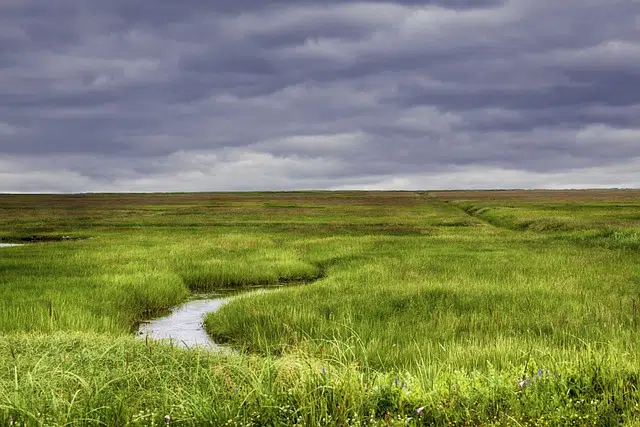
A plain is a plain.
A plain is a field or terrain without ups or downs . It is, therefore, an expanded surface that is characterized by its equality.
A flat geographical area or whose undulation is less than 150 meters above sea level is known as a plain or plain. If it presented a greater elevation, we would be facing a plateau .
Abyssal plain
The plains make up about 55% of the continental surface and 40% of the bottom of the land that makes up the ocean floor.
The one found at the bottom of the ocean is called the abyssal plain or platform and has a depth that ranges from 2,200 to 5,500 m. In the case of the plains on the Earth's surface, their origin comes from the ancient rocks that were part of the stable interiors of the continents. They are the result of millions of years of erosion.

The fertile plains are often used for agriculture.
Classification according to type
There are different types of plains, such as pediplains , peneplains , corrosion plains , panplains , littoral platforms and cryoflattening surfaces .
Pediplains are surfaces that arise from the retreat of scarps and pedimentation (the formation of concave platforms with gentle slopes at the foot of steep slopes). Penillanuras , on the other hand, are surfaces that have almost no topographical accidents .
Corrosion plains derive from other pre-existing plains, arising after chemical weathering processes and the dismantling of the eroded material. The panplains cover the flat surfaces that appear as a result of the union of alluvial plains, while the coastal platforms are those created by the erosive action of the waves.
Finally, cryoplanation surfaces are developed with the deposition of weathered material in depressions.
Examples of plains
With all this, it is evident that the quality of the terrain in a plain varies according to the type of soil that makes it up, some with immense qualities of fertility and others with little fertility.
Some of the most famous plains on the planet are the Gulf Coastal Plain (Mexico), the Pampean Plain (Argentina), the Made Savannah (Venezuela) and the La Mancha Plain (Spain).
Differences and similarities with the plateau and the valley
Just as a plain resembles a plateau in some ways, it also has similarities to valleys, although they are clearly two different geographical features.
On flat land there may be certain elevations but between their height and that of the rest of the territory there cannot be much difference. These elevations within a flat terrain receive various names according to their characteristics, they can be hills, knolls or hills.
At the same time, as we have already said, plateaus may occur (they have a certain height and have an abundance of grasslands and little tree vegetation ) and depressions (they are perceived as small unevenness of the terrain that are surrounded by the mountain; they have a extensive vegetation and are usually very fertile).
Within the various depressions there is a very particular classification that is that of valleys. These are characterized by being low, flat parts of land cloistered between the mountains at a lower height than the rest of the surrounding lands and with elongated diameters. At the same time, they are isolated from the rest of the territories and the only way to access them are the so-called mountain passes , which are trails marked by melting ice that are used for transit.
In any case, surely one of the fundamental characteristics of the valleys is their great fertility , possibly fueled by that difficult access and by the feeding of rivers and streams that come down from the mountains, providing the water necessary for the proliferation of all kinds of vegetation.
